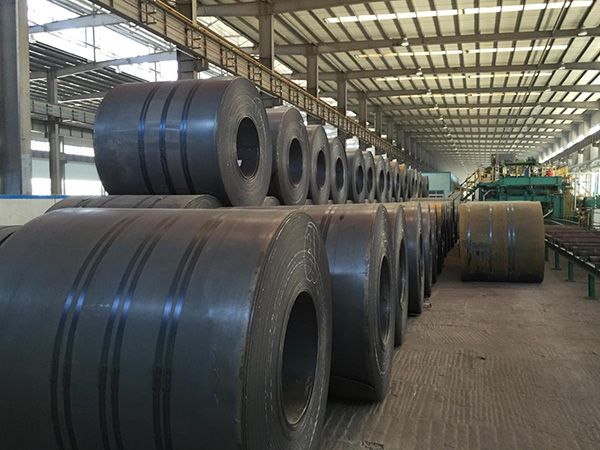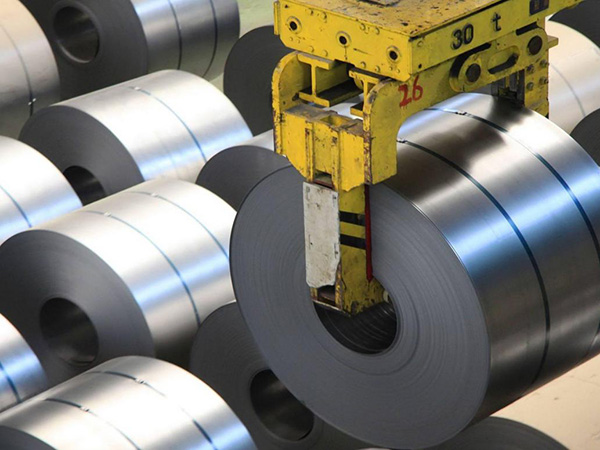Search Product
Search here for what you are looking for:
Search here for what you are looking for:

Under policy control, the steel market price continued to adjust. On May 27, the Steel Index price was 5,449 yuan/ton, a decrease of 1,205 yuan/ton or 18.1% from the 13th high. In terms of specific varieties, the average price of rebar in the top ten cities was 4,933 yuan/ton, and the higher point fell by 1303 yuan/ton, a decrease of 20.9%; the average price of hot-rolled coils in the top ten cities was 5265 yuan/ton, and the higher point fell by 1,400 yuan. /Ton, a decrease of 21.0%.

Continued to fall behind, steel prices rebounded on the 28th. At present, speculative demand has been basically suppressed, and the market has returned to fundamental logic. Then, what is the fundamentals of the current steel market?
Seasonal weakening of market supply and demand pattern
Steel production has maintained rapid growth. According to data from the China Iron and Steel Association, in early and mid-May, the average daily crude steel output of key steel enterprises was 241.8 and 2.379 million tons, respectively, an increase of 17.8% and 14.4% year-on-year.
Since entering the peak demand season, the social inventory of steel has been depleted well. According to data from the Lange Steel Cloud Business Platform, on May 28, the social stock of steel in 29 key cities across the country was 12.497 million tons, a decrease of 424,000 tons from last week, and 11.8% lower than the same period last year and compared with the same period in 2019. It was 22.4% higher, and the year-on-year growth rate was basically at a reasonable level.
In terms of plant inventory, according to a survey conducted by Lange Steel.com, on May 28, the inventory of construction steel plants in major regions across the country was 6.054 million tons, an increase of 538,000 tons from last week and 4.6% higher than the same period last year; In-plant inventory was 383,000 tons, a decrease of 19,000 tons from last week and 11.2% lower than the same period last year.
Steel production has grown rapidly, and social stocks of steel have remained at a reasonable level. However, as the off-season approaches, inventory in building materials factories has rebounded sharply for two consecutive weeks, and the supply and demand pattern of the steel market shows signs of weakening.
Mid-cycle demand near the top
In the medium term, after the epidemic, driven by investment and exports, the domestic economy has recovered quickly, and steel consumption has "unconventional" growth. The current round of demand expansion cycle is approaching the top.
First of all, infrastructure investment has not made obvious efforts. From January to April, the two-year average growth rate of infrastructure investment was 2.4%, an increase of 0.1 percentage point from the first quarter. This year, fiscal funds will play a more important role in the bottom line and the adjustment of economic structure, and infrastructure construction may maintain a relatively low level of growth. Secondly, the growth rate of real estate investment remained resilient, but the commercial housing sales boom in the leading indicators fell. From January to April, the area of newly started construction and the area of land purchased still fell year-on-year compared with the same period in 2019. Real estate companies have insufficient willingness to start construction, and investment is under downward pressure. The continued weakness of new construction constrains the growth of steel used in real estate construction in the later period. Finally, the expansion of manufacturing production slowed down, and the PMI of the manufacturing industry fell super-seasonally in April, which in part represented a significant decline in product output growth. In the later period, exports are facing a return, the stimulus for manufacturing production will weaken, consumption and manufacturing investment will resume exports, and the demand for manufacturing steel may be relatively stronger.
Steel mill profits are shrinking rapidly
Due to the continuous increase in the price of coke among the main raw materials, the Platts iron ore price index fell less than the decline in steel prices, making the decline in steel production costs less than the decline in steel prices, and the profits of steel mills have shrunk significantly. According to calculations by the Lange Iron and Steel Research Center, on May 28, the Langer pig iron cost index was 173.6 points, a decrease of 4.4% from the previous high; among the main steel products, the gross profit of grade 3 rebar has been closed from the highest level of 1,311 yuan/ton. As narrow as 62 yuan/ton, the gross profit of hot-rolled coils narrowed to 336 yuan/ton from the highest level of 1606 yuan/ton. The profit margin of steel mills has rapidly narrowed, which has strengthened the support of cost to price again.
Supply contraction is still expected
In order to alleviate the pressure on the middle and lower reaches and promote the sustained economic recovery, the policy will rebalance between the regulation of commodity prices and carbon peak and carbon neutrality in the short term, emphasizing the protection of supply and price stability. At present, the expansion of domestic steel demand is gradually slowing down. After the demand peaks, carbon peak and carbon neutrality will return to the focus of policy. The iron and steel industry is an important area of carbon emissions. On May 27, the Ministry of Industry and Information Technology once again proposed that controlling crude steel output is the most important and immediate way to reduce carbon emissions in the iron and steel industry. The expected reduction in steel output still exists. In addition, the new version of the capacity replacement method increases the replacement ratio, suppresses output growth in the medium and long term, accelerates regional mergers and reorganizations in the steel industry, improves the pricing power of steel companies, and adjusts the supply side in a direction that is beneficial to steel prices.
The steel market may stabilize in stages
After recent substantial adjustments, market sentiment has been released to a certain extent. The high steel price has suppressed downstream demand. The drop in steel price is conducive to the release of demand, and the overall terminal demand is still resilient. Under the strong policy, it is difficult for the steel market to change significantly, the profit of steel mills is rapidly narrowing, the price of the main raw material coke is relatively strong, supporting the market, the driving force of the market downturn is weak, and the short-term or phased stability is stabilized.



